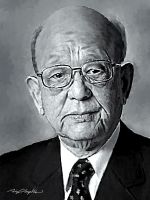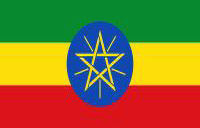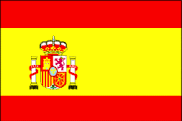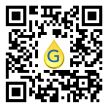
Akira Suzuki Ph.D.
The Nobel Prize in Chemistry 2010
Nobel Co recipients Richard F. Heck, Ei-ichi Negishi
Organic chemist. Inventor of boron version of palladium-catalyzed cross-coupling reaction. Investigated stereochemistry of hydroboration reaction. Suzuki reaction kept evolving. Became interested in organic chemistry after reading textbook.
"There were difficult and joyful periods. Memories of tough, trying experiences tend to fade with time. Now I think mainly about fun things."
Biography
By Dan Lednicer Ph.D., Organic/Medicinal Chemist
The Nobel Prize in chemistry has not infrequently been awarded for work that has led to the development of new reagents and techniques that have made possible hitherto difficult organic chemistry transforms. Awards for such new reagents are, more often than not, given until such time that the new method has come to be used routinely in the laboratory and/or industry; this may be years after the original invention. The 2010 Nobel Prize was awarded for such a development. The prize was given jointly to Richard F. Heck, Ei-ichi Negishi and Akira Suzuki for "for palladium-catalyzed cross couplings in organic synthesis".
Future Nobel laureate Akira Suzuki has spent almost his entire life on Hokaido, the large Japanese island north of better-known Honshu. He was born in 1930 in Mukawa, a town on Hokaido. On completing high school he enrolled in the University of Hokaido in Sapporo. An early interest in organic chemistry led Suzuki to major in that discipline. On obtaining his Bachelor of Science degree he stayed on at the University as a graduate student in the Graduate School of Science where he performed research in organic synthesis. Suzuki was awarded his Ph.D. in 1959 after completing his thesis research project. He was then hired by the Chemistry Department of the University of Hokaido as a research assistant. He achieved faculty status in 1961 when he was appointed Assistant Professor in the newly created Synthetic Chemical Engineering Department in the Faculty of Engineering. In 1963 Suzuki came to the United States where he served as a postdoctoral fellow in Herbert C. Brown's group at Purdue University. His research there centered on the newly discovered hydroboration reaction - a transform that enabled the formation of new carbon to boron linkages. This research was to bear a major role in his development of what was to be called the Suzuki reaction. He rose through achieving full Professorship in Third Laboratory in the Applied Chemistry Department in 1975. He retired from the University of Hokaido in 1994. Suzuki received a number of awards in addition to the Nobel Prize; it is particularly fitting that he received the American Chemical Society's H.C. Brown Award in 2011.
Forming new carbon to carbon bonds represents one of the key operations in synthetic organic chemistry. This is the means by which chemists assemble smaller molecular fragments for building target molecules. The traditional methods for coupling fragments via new carbon to carbon bonds available up to the early 1960s had severe limitations. Many of those procedures required harsh conditions that might damage either the starting materials or final products. This would consequently require extra steps in the synthetic scheme to add and later remove protecting groups. In the late 1960s, future Nobel Laureate Richard F. Heck published a series of papers describing a new procedure for coupling fragments that relied on a palladium complex catalyst. This and related cross-coupling reaction rely at some stage on transferring a carbon bond transiently to palladium to form an organometallic linkage. This transient bond is then subsequently transferred to a carbon atom of the other cross-coupling partner. In the case of the pioneering Heck reaction the transfer involves exchange of a carbon to halogen bond, such as for example carbon to bromine, to a carbon to palladium link. Ei-ichi Negishi subsequently developed a related procedure for linking fragments where one of the partners contains a carbon to zinc linkage. The exchange in this case involves transfer of a carbon to zinc bond for the required carbon to palladium linkage. Akira Suzuki some years later found that the exchange occurs yet more readily where one of the partners in the cross-coupling reaction features a carbon to boron bond. The Suzuki version of the palladium-catalyzed cross coupling reaction has found widespread use in both research laboratories and for preparing commercial synthetic organic products.ne is interested, and making a continuous effort to achieve one's goals. Dr. Negishi will share his own experiences about the continued efforts that led to his long-coveted prize.
Discover Your Abilities and Aspirations!
 $10 $25 $50 $100 Other
$10 $25 $50 $100 Other
Tax Exempt 501(c)3 Non-Profit Organization
Any Currency
“…the peace that is found in libraries and laboratories…” - Louis Pasteur
Copyright © 2023 Ganga Library Inc. All Rights reserved.;

Photo U. Montan nobelprize.org. Painting Tim Tompkins - PaintHistory.com
Name: Akira Suzuki
Birth: 12 September 1930, Mukawa, Japan
Institution: Hokkaido University, Sapporo, Japan
Award: "for palladium-catalyzed cross couplings in organic synthesis"
Subject: organic chemistry
Portion of cash: 1/3
Biography
Post Doc Mentor: Herbert Charles Brown
Honoring Akira Suzuki
Quotations
Videos













